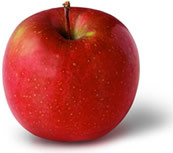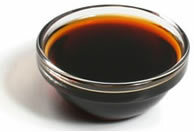Do you like Japanese peanuts? It's from Noodles? Love a salad seasoned with Shoyu or a warm pastry from the fair? Did you learn math with the Kumon method and practice Judo? So you're just another one of thousands of Brazilians who have gotten used to many of the little things the Japanese have brought to our lives.
Since they arrived here in 1908, the Japanese have spread across the country. Although many families cluster in colonies (such as São Paulo and Paraná), after 100 years of immigration, there are Japanese families living from the north to the south of the country. Little by little, they mixed with Brazilians and thus formed Japanese-Brazilian families, who presented us with thousands of Nikkei (Brazilian citizens of Japanese descent).
During those hundred years, the Japanese taught us to live with their customs. Words such as shiatsu, tatami, karate, karaoke and many others were incorporated into the Brazilian vocabulary, even though many do not even know that their origin is Japanese.
More than just adding new words, the Japanese added new flavors to Brazilian cuisine, which made with words like persimmon, cabocha and tofu to definitively enter dictionaries, menus and recipe notebooks by on here. This is because it was they, the immigrants, who brought the sweet persimmon to Brazil (there was only an astringent version of the fruit, the type that “binds the mouth”), the cabochon type pumpkin (the one we use to make sweets) and the Fuji apple (the name implies huh? Arrived here in 1971). Ponca tangerine is almost a “nikkei” fruit: it is the result of grafting a type of Japanese mandarin into a lemon tree in Brazil.

Fuji Apple: Common fruit in Brazil that bears Japan in its name
In addition to these, Aodai-type cucumber and radish were other foods that we learned to eat from people in Japan. They began to sell vegetables, such as radishes and cucumbers, which they grew in their backyards for their own consumption. The bean sprouts, widely used in Brazil in salads, are also of Japanese origin, known as “moyashi”.
A curiosity that many people don't even realize is that the planting of soybeans in Brazil was disseminated by Japanese immigrants. Before their arrival, it was planted on a small scale in Bahia. Today it is one of the great assets of Brazilian agribusiness, thanks to the Japanese.
At the beach of spices and delicacies, the Japanese taught us to like black pepper (brought by a chef from a vessel that docked here in 1933), horseradish (the green paste used to taste with raw fish) and the Aji-no-moto (The seasoning that enhances the flavor of food is typically Japanese). Without forgetting, of course, soy sauce, the Japanese soy sauce indispensable on Brazilian tables.

Shoyu sauce is made from soy
But it wasn't just fruits and salads that we learned to eat with the Japanese. With them we learn to like dehydrated foods that with boiling water and three minutes are ready and tasty (nothing more practical), we learned also eating with two chopsticks (the chopsticks, which often end up in the hair of Brazilian women) and drinking green tea (to lose weight, principally). Another Japanese drink that has a captive place in the Brazilians' cellar is sake, an incredible result of a rice fermentation process.
Not to mention the typical Japanese dishes that we try and adopt such as sushi, sashimi, yakisoba, temakisushi and sukiyaki.
We cannot deny that, in a hundred years, the Japanese managed to make their mark on Brazil. Even the name of a city of Japanese origin exists: the city of Assaí, in Paraná, was practically founded by the immigrants who named it with the “Portuguese” version of “asahi”, which in Japanese means “sol source".

The "tsuru" heron: Origami are even taught in schools in Brazil.
So it doesn't matter if you've never showered in a hot tub, never done paper origami, or don't have a kanji tattoo. What matters is that, in 100 years, the Japanese who came to Brazil were able to teach a little of their culture to the Brazilians and, with that, they showed us a great lesson: they never stopped being Japanese, even though they were so far from their parents.
By Camila Mitye
Brazil School Team
Japan - Brazil School
Source: Brazil School - https://brasilescola.uol.com.br/japao/100-anos-japao-no-brasil-que-aprendemos-com-os-japoneses.htm

